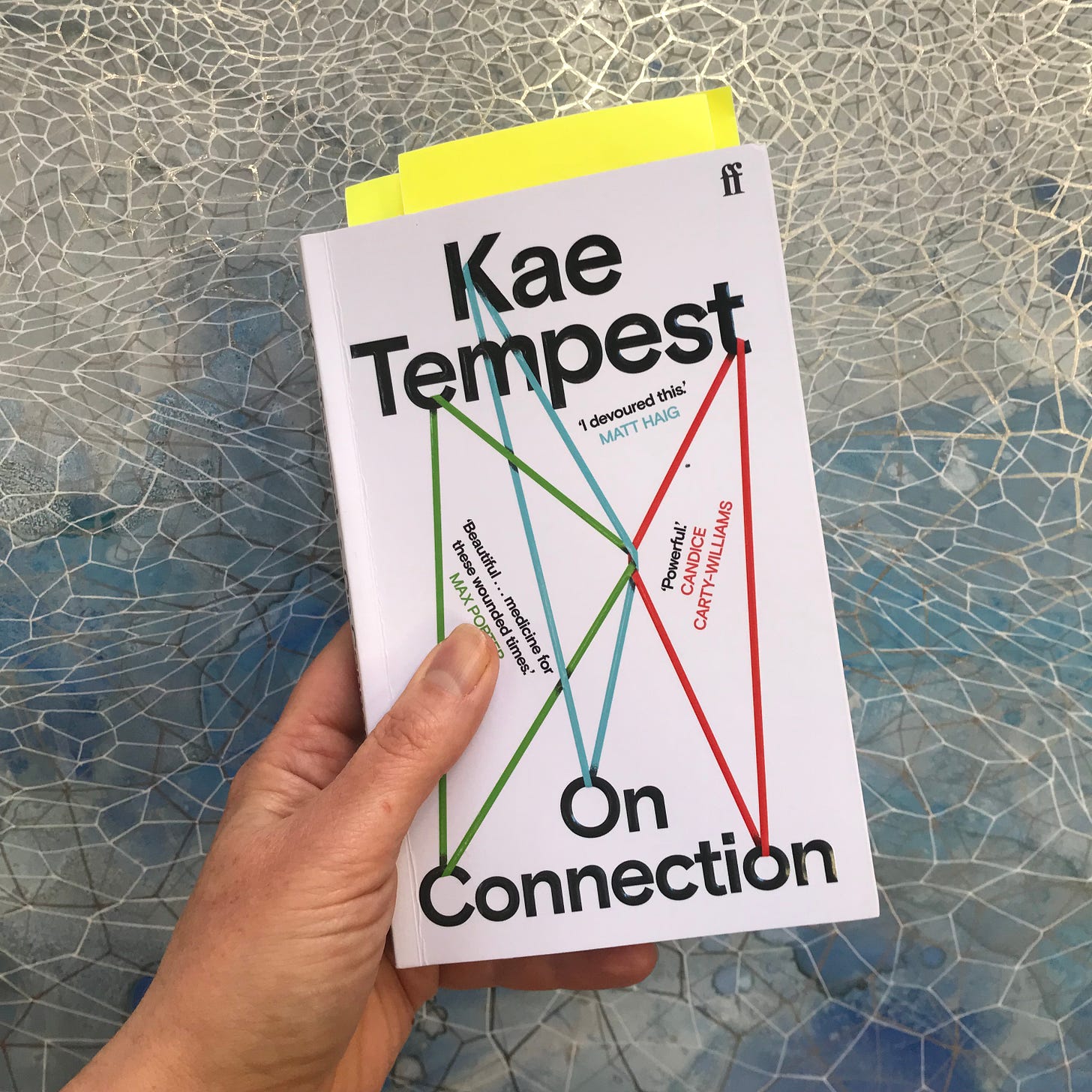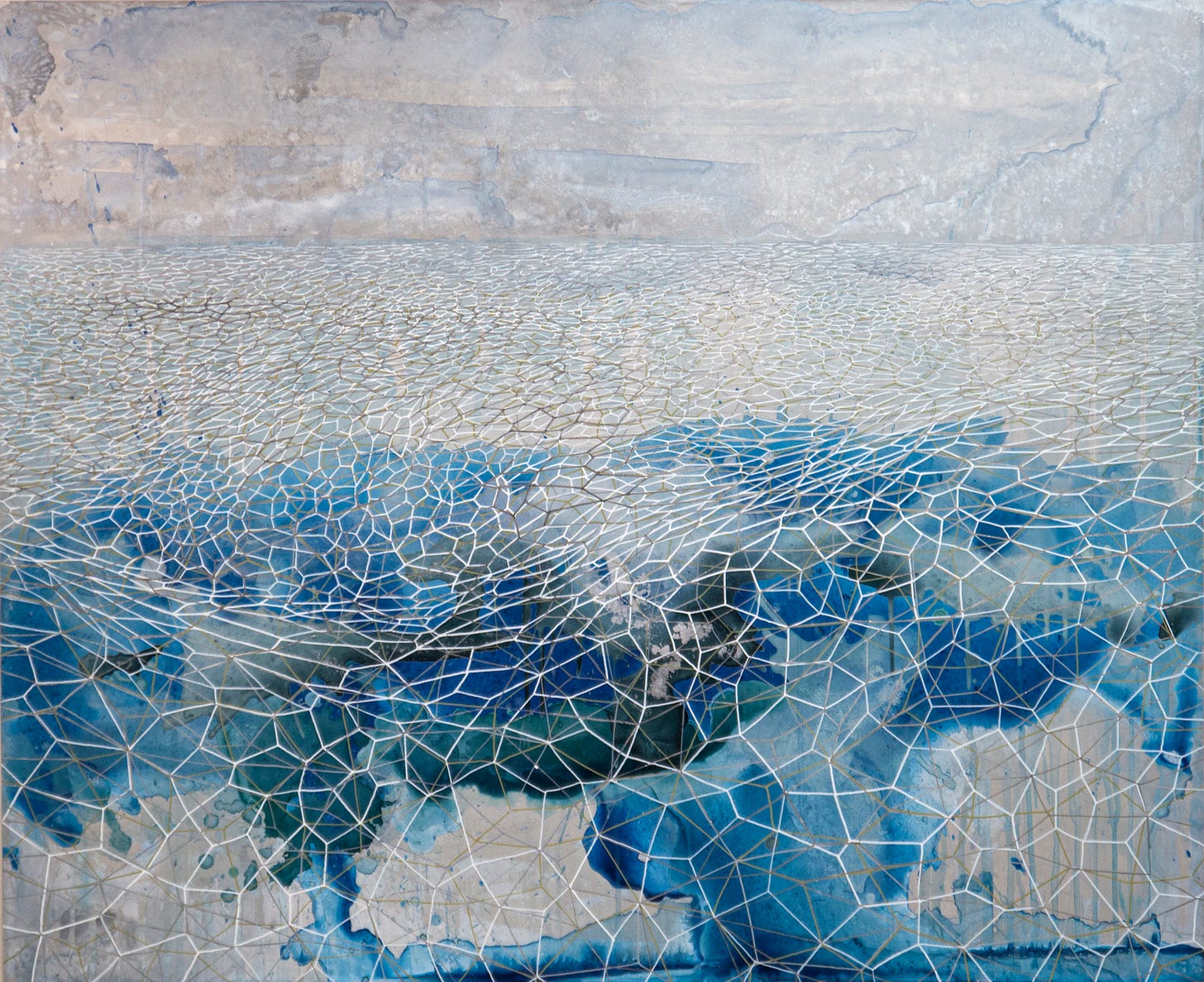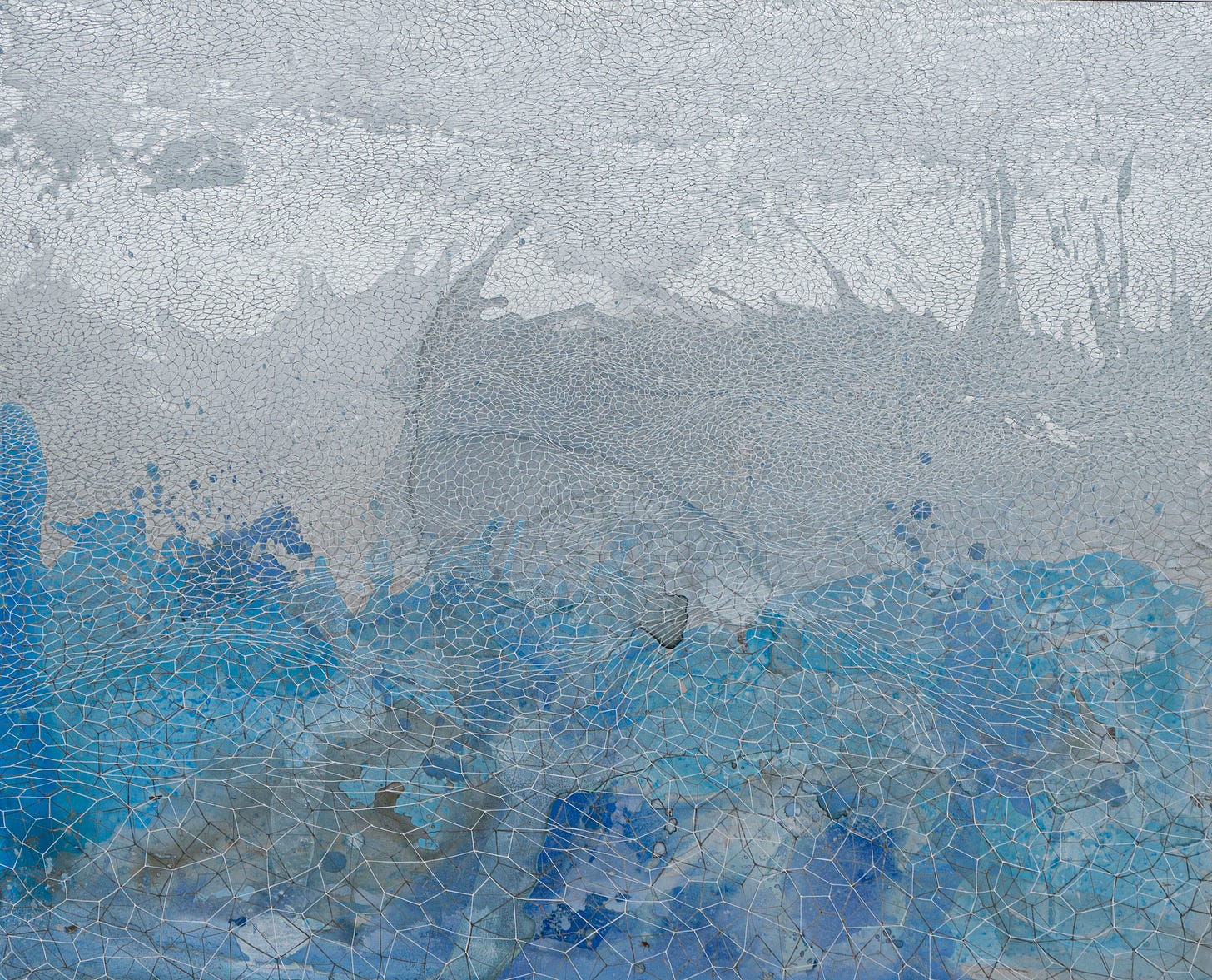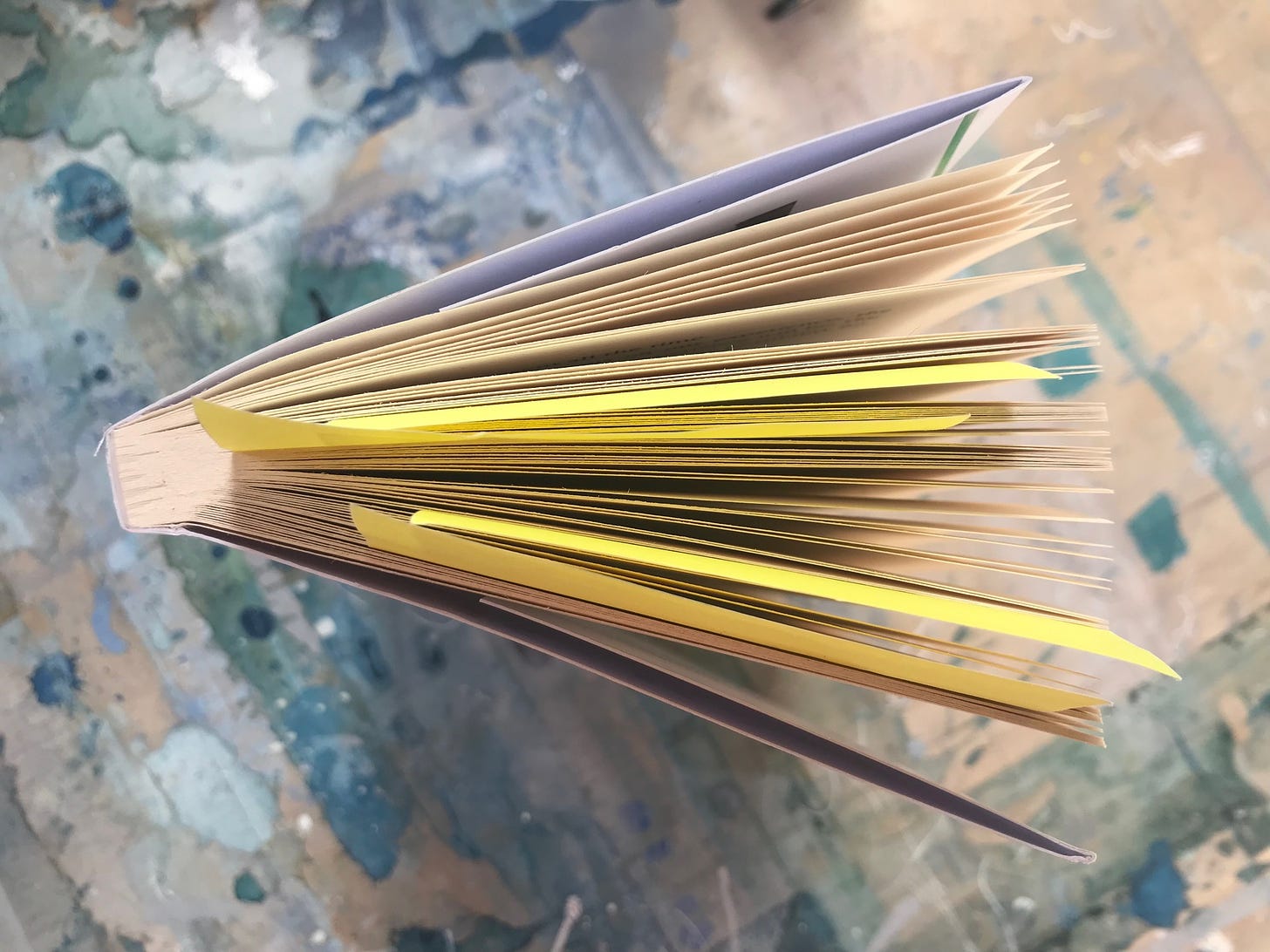On creativity and connection
I’ve been thinking and reading about water, time and connectedness a lot recently. But a piece of the puzzle has been missing: where does creative practice fit in to this story? We can think about how beauty is necessary even in times as full of trouble and foreboding as these. But what of creativity more generally?
It seems to me that when you carry a question about with you as you go through the days, the right book, film, piece of music or art work always somehow finds you. So it was that I came across Kae Tempest’s essay/short book ‘On Connection’ last week, just exactly when I needed it.
'On Connection' by Kae Tempest
Tempest is a performance poet of rare power, and although they interpret the question of connection and creativity through the lens of a performative practice where the audience is right there in the moment, the argument stands for any art form.
‘On Connection’ is about how ‘immersion in creativity can bring us closer to each other and help us cultivate greater self-awareness’ and begins with a definition of terms that is acute and bracingly crisp:
‘Creativity is the ability to feel wonder and the desire to respond to what we find startling. Or, more simply, creativity is any act of love. Any act of making.’
‘Connection is the feeling of landing in the present tense. Fully immersed in whatever occupies you, paying close attention to the details of experience. Characterised by an awareness of your minuteness in the scheme of things.’
‘Creative connection is the use of creativity to access and feel connection and get yourself and those with you…into a more connected space.’
Well, hello, I thought as I read these paragraphs. Bring. It. On.
Tempest dispenses with any sense of art as either self-indulgent luxury on the one hand, or on the other, polemic, lecture or activism. You don’t need to posture, shout for attention or feel self-conscious about taking up space. You don’t have to have all the answers. You don’t even need to have the right questions. You don’t need to fix the world. You just need to connect.
And you need to pay attention.
‘James Joyce once told me; “In the particular is contained the universal." I appreciated the advice. It taught me the closer attention I pay to my ‘particular’ the better chance I have of reaching you in yours.’
This closeness of attention that Tempest has cultivated over many years of creative practice and performance has cultivated a warmth and compassion that feels increasingly rare in these times of cultivated outrage and entrenched positions:
‘I see that every single person is affected by the violence of existence in different ways, and that people carry their burden however they can. People suffer a great deal, and ideally they must process their traumas in order to reach some kind of peace. But what if your situation is too intense and you can’t get a moment’s respite? People respond differently to things. People have different things to respond to. I am no one to judge what conclusions someone has come to. I do not want to change minds any more. I just want to connect.’
Edgelessness, 2021, Samantha Clark. Acrylic, gouache and chrome ink on aluminium, 90cm x 110cm
Tempest goes on to describe that sensation we have in the moment we feel that connection is made, that almost electrical current that sparks off a page or a painting, a song or a film, any work of art that we connect with:
‘Words on a page are incomplete. The poem, the novel or the non-fiction pamphlet are finished when they are taken up and engaged with. Connection is collaborative. For words to have meaning that have to be read.
‘To really be useful to the connective power of the text, rather than interrogators, we must be the conductors. We, the readers or listeners, are crucial to the text, story or song becoming powerful. We are not impartial observes; we are a fundamental part of the circuitry; if we are not connected, the charge will not be able to flow.
‘As readers, we feel this happen when someone speaks directly to our experience and we feel the words burning themselves into us. We get some sense of the poet or the writer as someone we feel knows us. This is the circuit connecting.’
This, then, is what the artist, writer, composer, film-maker is seeking – not to show off, not to teach or convince or persuade or provoke or to solve or fix anything.
To connect.
To see our own particular predicament with such clarity, honesty and compassion that our reader, or viewer feels seen in their own particularity, their own predicaments and vulnerabilities.
So, if water is the connective tissue of the physical world, perhaps creativity can be understood as the connective tissue of the human spirit. Art is how we come to see each other more deeply, and to see and understand ourselves.
'Immerse' detail, 2021, Samantha Clark, Acrylic, gouache and aluminium leaf on aluminium panel.
If this sounds a bit airy fairy, Tempest also acknowledges the more workmanlike aspects of creativity. Graft, doggedness and the possibility of failure.
‘Craft is the thing you develop while you’re waiting for connection to show up. Whole weeks pass so quiet and slow, you don’t know what’s wrong with you and you pretend everything’s normal and you get on with editing the manuscript or practicing in double-time…keeping the muscles toned.’
I've written elsewhere about how others have described this diligent commitment and patience as ‘practice’.
‘We have grown so vast and entitled. The entire ecosystem that sustains us is buckling under our weight. Surely, something has got to give. And yes, we die later in life than we used to…it’s not all bad. But sometimes I need something radical to snap me out of the lonely daze. Something ancient and more human than everything we’ve built to keep us safe and quiet and nice and routine; all the convenient distractions of goal-oriented life, the numbness that holds up the curtain, the covering that takes the edge off the violence of our distant and not so distant past…I need creativity.'
And this paragraph is one that surely I need to copy out in big letters and pin to my studio wall:
‘Don’t be too hard on yourself.
You can’t be present all the time.
But the closer we focus on our experience, the greater the awareness of the experience will be, the greater the immersion, the greater the possibility for connection.’
My marked up copy of 'On Connection' Kae Tempest
My copy of ‘On Connection’ is full of post-it notes, underlinings and scribbles in the margin already. It's a short text but one that will, I’m sure, bear reading multiple times, and thinking more about too.








